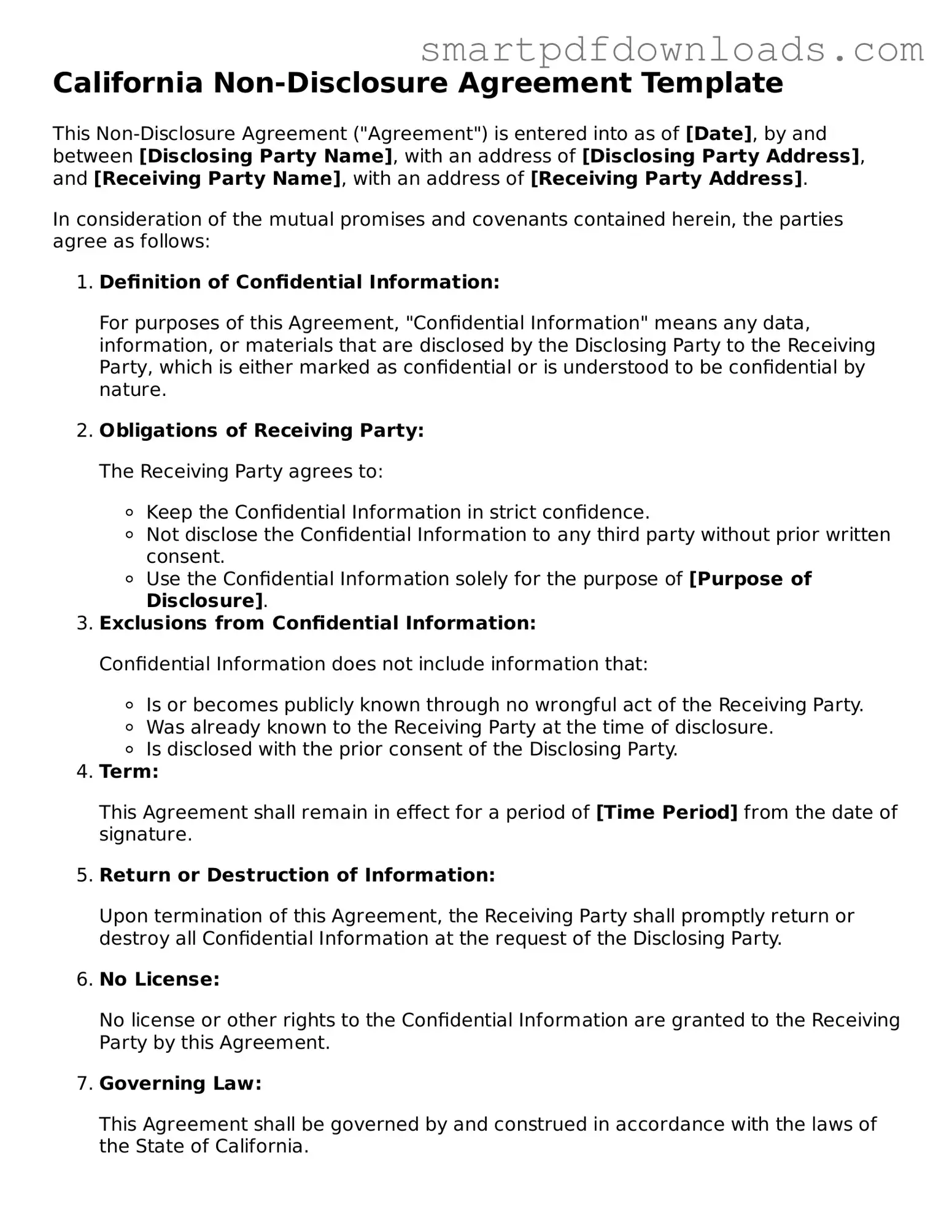California Non-Disclosure Agreement Template
This Non-Disclosure Agreement ("Agreement") is entered into as of [Date], by and between [Disclosing Party Name], with an address of [Disclosing Party Address], and [Receiving Party Name], with an address of [Receiving Party Address].
In consideration of the mutual promises and covenants contained herein, the parties agree as follows:
- Definition of Confidential Information:
For purposes of this Agreement, "Confidential Information" means any data, information, or materials that are disclosed by the Disclosing Party to the Receiving Party, which is either marked as confidential or is understood to be confidential by nature.
- Obligations of Receiving Party:
The Receiving Party agrees to:
- Keep the Confidential Information in strict confidence.
- Not disclose the Confidential Information to any third party without prior written consent.
- Use the Confidential Information solely for the purpose of [Purpose of Disclosure].
- Exclusions from Confidential Information:
Confidential Information does not include information that:
- Is or becomes publicly known through no wrongful act of the Receiving Party.
- Was already known to the Receiving Party at the time of disclosure.
- Is disclosed with the prior consent of the Disclosing Party.
- Term:
This Agreement shall remain in effect for a period of [Time Period] from the date of signature.
- Return or Destruction of Information:
Upon termination of this Agreement, the Receiving Party shall promptly return or destroy all Confidential Information at the request of the Disclosing Party.
- No License:
No license or other rights to the Confidential Information are granted to the Receiving Party by this Agreement.
- Governing Law:
This Agreement shall be governed by and construed in accordance with the laws of the State of California.
- Entire Agreement:
This Agreement constitutes the entire understanding between the parties and supersedes any prior agreements.
IN WITNESS WHEREOF, the parties hereto have executed this Non-Disclosure Agreement as of the date first above written.
[Disclosing Party Name]_____________________ [Date]
[Receiving Party Name]_____________________ [Date]
